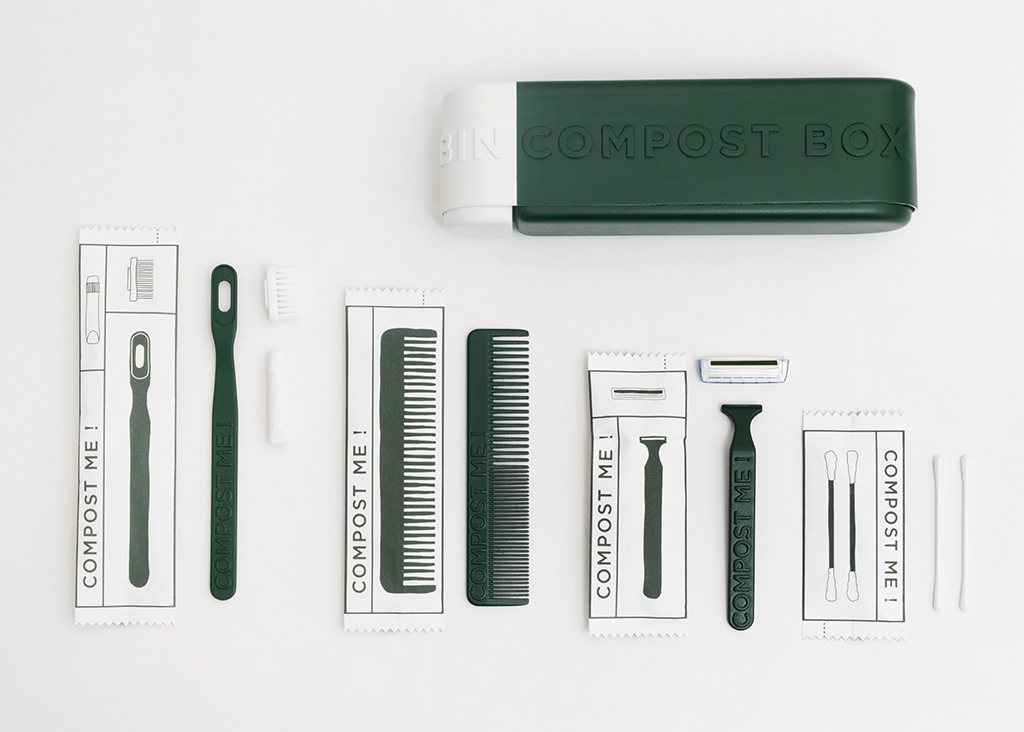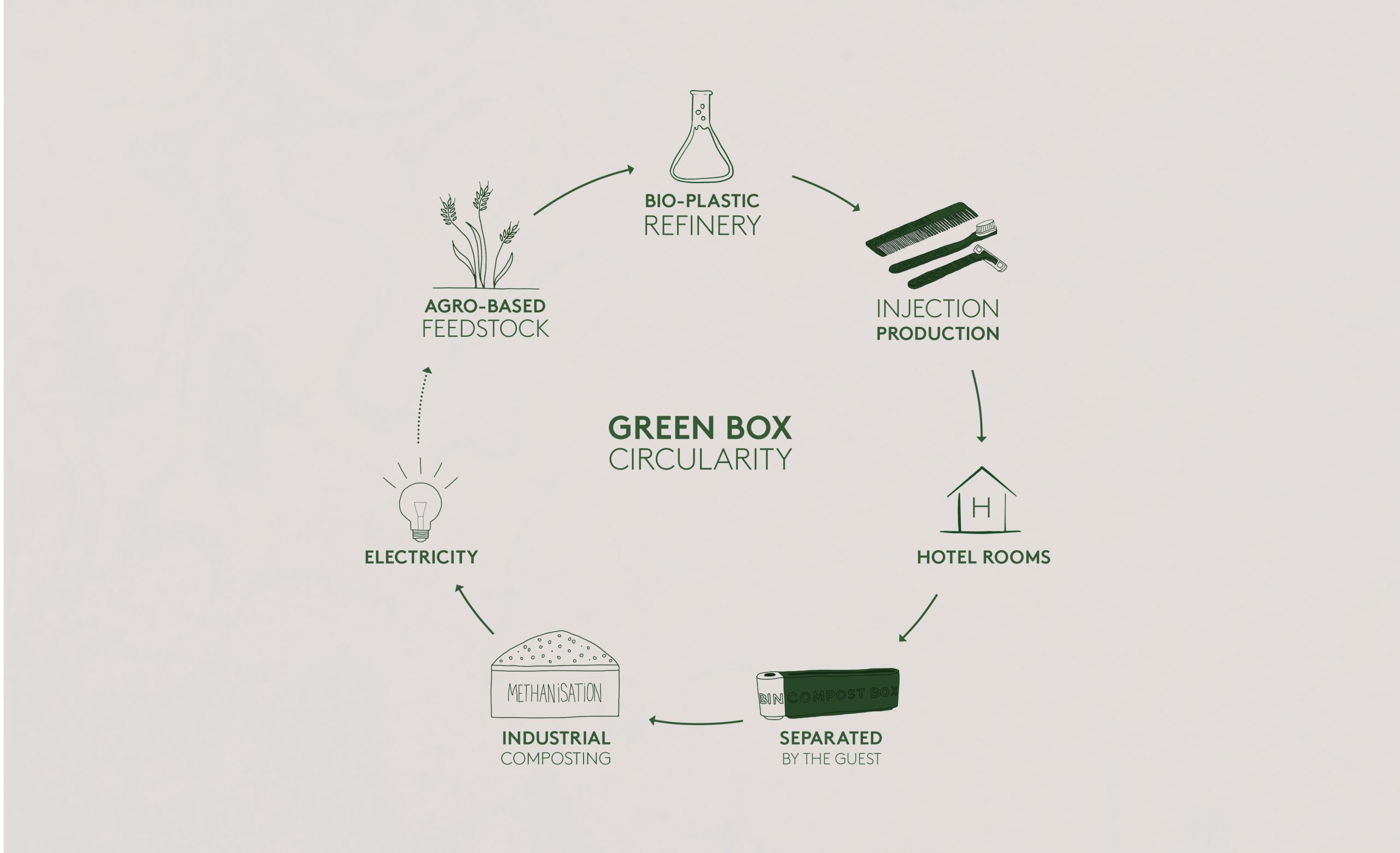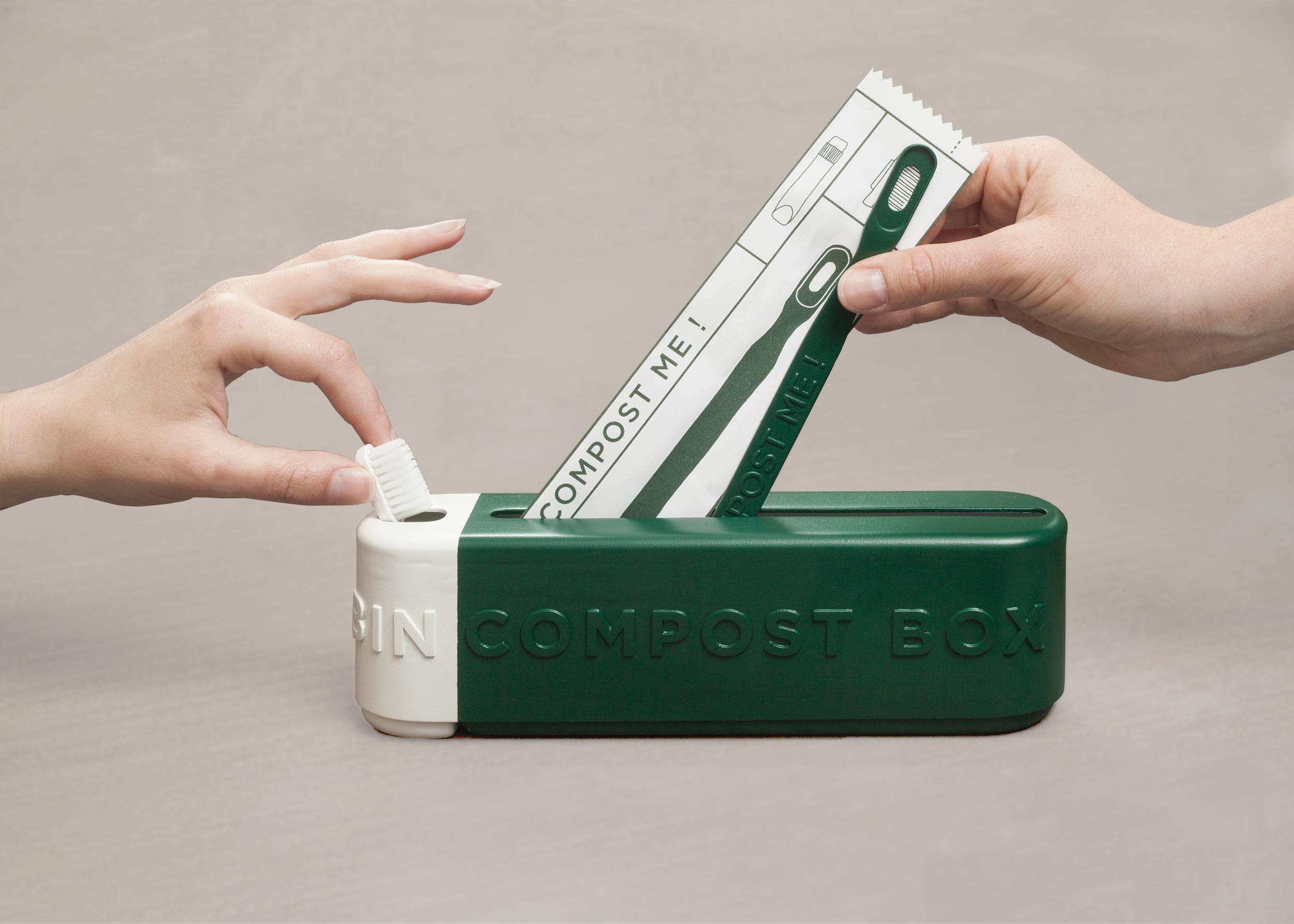Green Box

Useful information
- Team members
- Eléa Nouraud James Dart Lola Buades Balle
- Country
- Sweden
- Keywords
- Circular economy sustainable tourism compostable plastic closed loops zero waste industrial design
Short Description
Green Box is a circular amenity kit that helps tackle plastic waste in the hospitality industry.
Detailed Description
Green Box is an amenity kit fully integrable in a circular business model. The kit is paired in each room with a disposable bin. After use guests will sort items between compostable or non-compostable materials, creating awareness for new kinds of waste streams.
The White parts, too contaminated to be composted, will be disposed of with the general waste. While the Green compostable items will be treated in an industrial facility, together with the rest of the organic waste from the hotel. Made out of recycled PLA and plant-based pigments, Green parts will become biogas and soil after 10 day in an industrial methanisation plant. The energy created by a kit could power a standard LED light bulb for a day. The soil left could be used as fertilizer.
Green Box started as a reaction to the quantity of single-use plastic pollution found in Lake Geneva. We decided to focus on the hospitality industry, an overlooked big player in the issue that has the chance to get reinvented post COVID-19
Project Details
- Does your design take social and cultural challenges and human wellbeing into consideration?
Every year tens-of-millions of amenity kits are thrown away, but do we really need those items to last forever after only being used for a few minutes? Take for instance a normal toothbrush, it takes in nature more than 300 years to degrade, and even then some chemical components and micro-plastics will never fully reintegrate in the environment.
The hospitality industry has the chance to reinvent itself post COVID-19 and sustainability should be at the heart of what businesses do. As Green Box shows, you don’t have to make big changes to have a big impact. Something as small as an amenity kit can really make a difference.
- Does your design support sustainable production, embodying circular or regenerative design practices?
Made out of recycled polylactic acid (PLA), leftover wheat fibres and non-toxic plant-based pigments, the kit utilised the internal waste collection of a hotel to allow a proper treatment of the material. By properly disposing the white combustible pieces into the white part of the bin and the green compostable parts in the green, we can educate the guest and create a closed stream. The green pieces will be industrially composted (methanisation process). After 10 weeks we will be left with just soil and biogas. The energy created by the methanisation of a kit could power a standard LED light bulb for more than a day. The organic matter left could be used as a soil fertilizer to regrow wheat.
- Does your design use principles of distribution and open source?
Green Box is still in the concept stage, we are looking for local partners to put the production into motion. Being a circular product, its functionality comes hand in hand with proper collection and treatment in an anaerobic composting plant. The collection/disposal infrastructure changes drastically from place to place, so we envision its implementation with local partners. A tailor made business plan with these partners can offer different degrees of openness.
- Does your design promote awareness of responsible design and consumption?
Green Box impact comes from two aspects, the possibility of creating a closed loop for single-use items designed for the hospitality industry and to educate the guests of the need of separated waste streams for new materials. The same effort put into educating the public about the need to separate cardboard, glass etc., needs to be done now with the new generation of sustainable materials. Mostly in the world of plastics, where cross contamination can diminish the potential recyclability of petrol plastic.
Images


